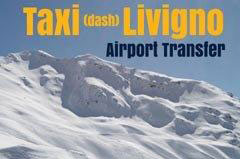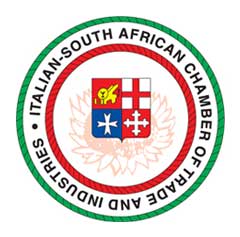South African tourism: 2011 better than 2010
- Details
- Created on Tuesday, 01 May 2012 14:54
 South Africa’s tourism industry has managed to build on the momentum achieved during a record-breaking 2010, by growing a further 3.3% and attracting 8,339,354 international tourists in 2011.
South Africa’s tourism industry has managed to build on the momentum achieved during a record-breaking 2010, by growing a further 3.3% and attracting 8,339,354 international tourists in 2011.
Despite tough global economic conditions, South Africa’s 2011 tourist arrivals surpassed the 8,073,552 mark it reached when recording 15,1% growth in 2010, on the back of the country’s successful hosting of the 2010 FIFA World Cup™.
Global tourism growth was recorded at 4,4% in 2011. If the estimated 310 000 people that travelled to South Africa for the specific purpose of the 2010 FIFA World Cup™ are excluded from the 2010 arrivals statistics, then 2011 saw a year-on-year arrivals growth of 7,4%.
While South Africa’s core markets in Europe and North America remain our major source of long-haul tourists, the overall arrivals growth in 2011 was largely due to a 14,6% growth in the emerging Asia markets, and a 6,8% increase in tourist arrivals from African land markets.
European tourist arrivals declined by 3,5% largely due to the ongoing impact of the global economic crisis in many European countries, while North American numbers grew by 2,3%, despite the continent facing major economic challenges.
If 2010 FIFA World Cup™ numbers are excluded, growth would have been 2,4% for Europe, 12,9% for the Americas, 20,1% for Asia & Australasia, and 9,1% for Africa in 2011.
Factoring in arrivals for the 2010 FIFA World Cup™, total overseas arrivals declined by 1,8% (-40,275) to 2,176,719 arrivals.
Europe remained the top performing overseas source region in terms of tourist arrivals, followed by the Americas, with Asia and Australasia continuing to gain ground.
Germany leads the way for Europe
Germany remained the only key European source region to achieve growth with overall Europe (including UK) arrivals continuing their decline.
Arrivals from Europe declined by 3,5% (-45,945) to 1,275,679 compared with 1,321,624 arrivals during the same period in 2010. The continent’s price-conscious consumers opted to travel for shorter periods, closer to home.
The UK remained Europe’s top performing market in 2011. UK arrivals declined by 7.2% (-32,547) to 420,483 arrivals. The next best performing European source market was Germany, which saw a 9,3% (19,974) increase in arrivals to 235,774. The Netherlands was next with 113,846 arrivals, an 8,3% decline. France declined 8,6% (-9,981) to 105,420 arrivals. Italian arrivals remained stable despite being one of the hardest hit economies during the global recession, with just 13 fewer arrivals in 2011 to 54,628 arrivals compared with 2010.
South Africa holds onto US World Cup-related gains
The US was one of the countries that saw the most fans travelling to the 2010 FIFA World Cup™ (30,000). There was a 22.6% increase in US arrivals to South Africa in 2010 and further growth of 1.9% in 2011 to 287 614 arrivals. Canadian arrivals increased by 4,5% to 57,767.
South Africa also held on to its massive 2010 FIFA World Cup™ year growth of 66.7% out of Brazil, growing by a further 0.8% in 2011 and attracting 54,183 tourists from this market. South Africa plans to increase its focus on Brazil, and is opening an office there in the coming financial year.
Overall tourist arrivals from the Americas declined by 5,5% (-25,091) to 432,890 arrivals, with Central and South America arrivals declining by 27,3% (-32,823) to 87,506. There were sharp declines in arrivals from Argentina (-36,3%), Mexico (-79,6%) and Chile (-55,8%).
However, if 2010 FIFA World Cup™ tourist arrivals are excluded, tourist arrivals from the Americas increased by 12,9% (49,562) with North American arrivals growing 13,7% and Central and South America growing by 10,1%. Arrivals from Brazil would have shown a 39,1% increase, with Argentina arrivals growing by 6,7% and arrivals from Chile by 4%. Mexican arrivals would have declined by 48%.
Impressive growth from emerging markets
Arrivals from Asia and Australasia increased by 8,4% (32,556) to 420,666 arrivals. This growth was buoyed by growth in the Asian market, driven by India and China. Arrivals from Australia declined.
Asia arrivals increased by 14,6% (37,921) to 297,882. The top performing Asian markets were India, China (including Hong Kong) and Japan respectively. Indian arrivals grew 26,2% (18,780) to 90,367. Chinese arrivals increased by 24,3% (16,574) to 84,883. Japanese arrivals declined by 4,7% (-1,293) to 26,284.
Arrivals from Australasia declined by 4,2% (-5,365) to 122,784. Arrivals from Australia declined by 4,1% (-4,399) to 103,506. New Zealand arrivals declined by 4,8% to 18,859.
Growth recorded in Africa air and land markets
African air markets increased by 6,3% (21,036) to 356,191 arrivals. The biggest growth in the African air markets came from Nigeria with arrivals increasing 37,5% (17,549) to 64,402 arrivals. Angola was the next best performing African air market. Tourist arrivals from Angola increased by 1,7% to 39,217 arrivals. DRC arrivals grew by 4,1% to 32,582. Kenya arrivals increased by 4,1% to 30,279.
In the smaller African air markets, growth was achieved from Tanzania, Ghana, Uganda, Turkey, Egypt, Saudi Arabia, Seychelles and Mauritius. All other smaller air markets declined. Arrivals from Tanzania increased by an impressive 45,8% to 28,645. Arrivals from Israel and the UAE declined by 8,3% and 19,5% respectively.
Africa land arrivals increased by 6,8% (372,827) to 5,828,128. The top performing Africa land market was Zimbabwe, which grew 2,6% (39,294) to 1,553,008. Arrivals from Lesotho increased by 19,7% (250,759) to 1,526,597. Mozambique arrivals increased by 2,4% to 1,076,753. Swaziland arrivals increased by 10,7% to 700,119. Botswana arrivals declined by 5,7% to 477,937. Namibia arrivals increased by 3,6% to 197,835. Zambia arrivals increased by 1,7% to 160,302. Arrivals from Malawi increased by 7,5% to 135,577.






















